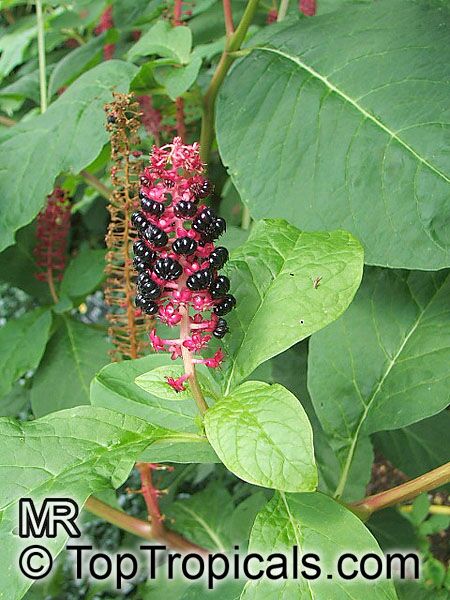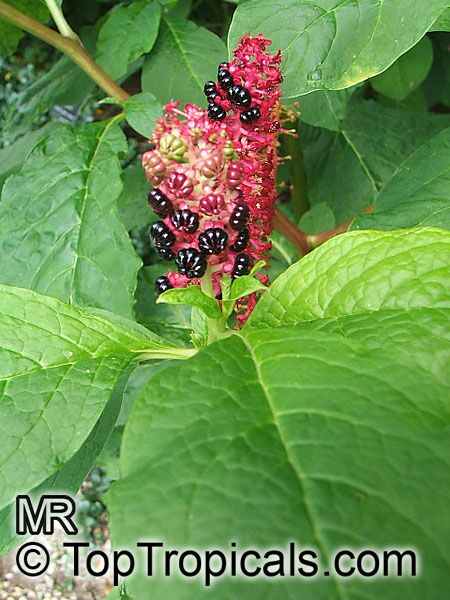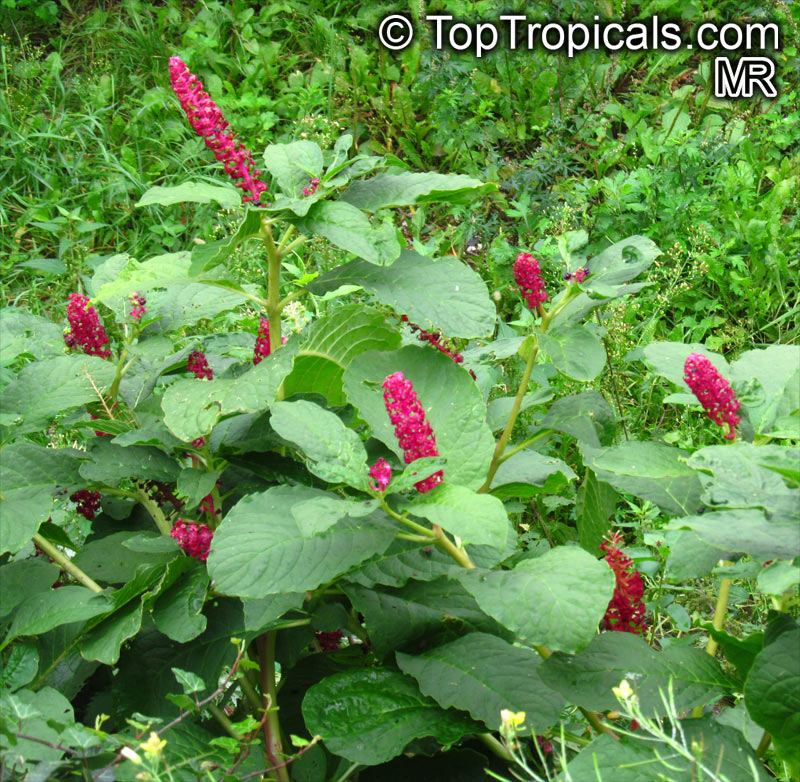Phytolacca esculenta (Pokeweed)
Top Tropicals Plant Encyclopedia
Botanical names: Phytolacca esculenta, Phytolacca acinosa esculenta
Common name: Pokeweed
Family: Phytolaccaceae
Origin: China









An ethnomedical plant, the young shoots are boiled and used as a vegetable in the Orient. Phytolacca esculenta (Pokeweed) is a large shrub native to China, typically growing between 5-10 ft tall. It is also sometimes known as an Indian poke, pokeberry, poke root, or inkberry and grows in USDA Zone 9-11. This plant has large, oval and pointed, dark green leaves, and clusters of white and off-white flowers in spring and summer. It is often found in woodland areas, but is also a very popular garden plant.
Pokeweed is a low maintenance plant and grows best in full sun or in semi-shaded areas. It prefers a moisture retentive soil, requiring regular watering and moderate watering during the summer months. This plant is not frost-tolerant, so it is important to provide protection during colder months if grown in a pot, or in cold regions.
This plant is also known for its ethnomedical properties as the young shoots are boiled and eaten as a vegetable in the Orient. It is important to note that the leaves should only be cooked and eaten while they are young, as they become toxic with age. The plant itself is also poisonous or toxic, so it is important to be mindful of this when caring for it.



